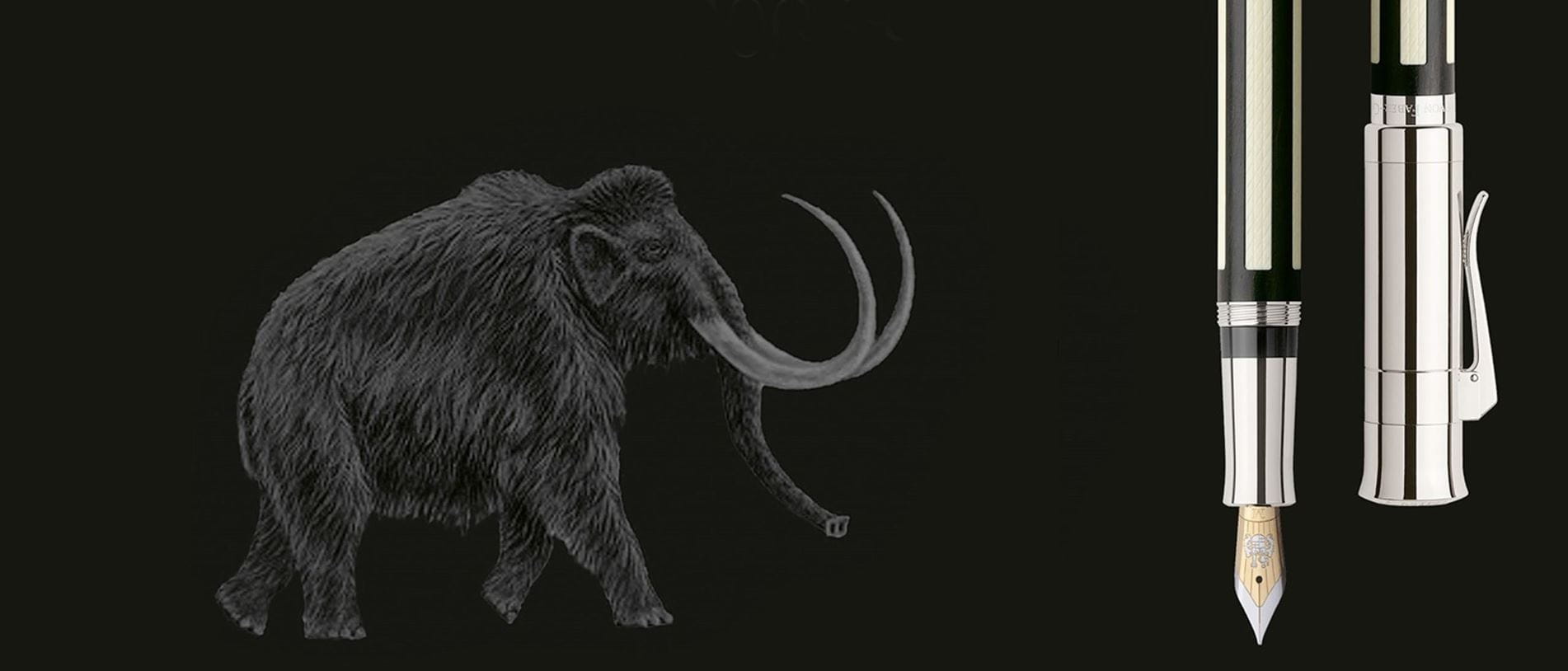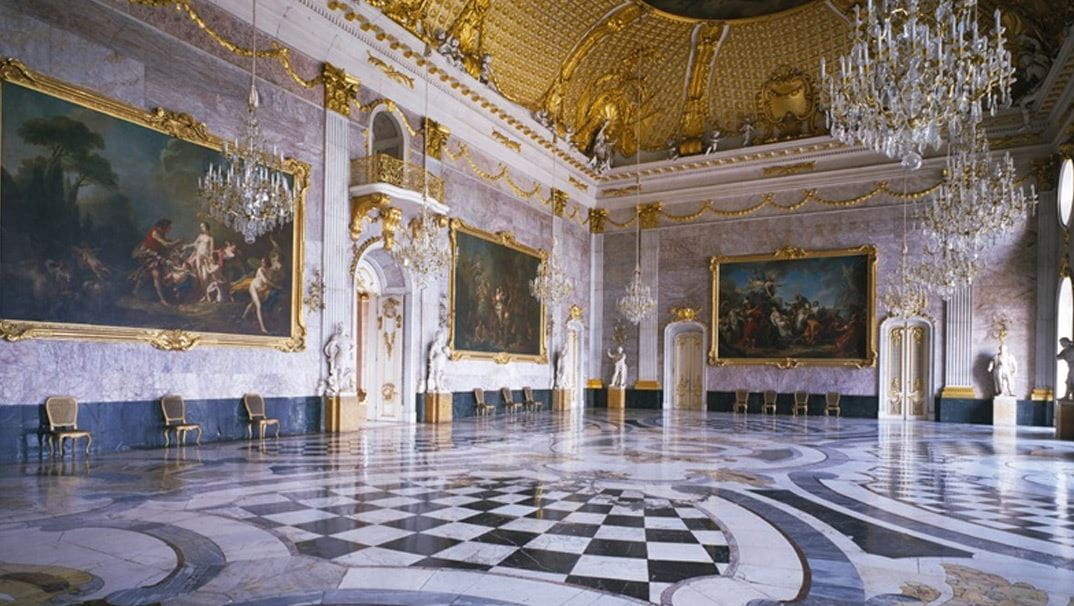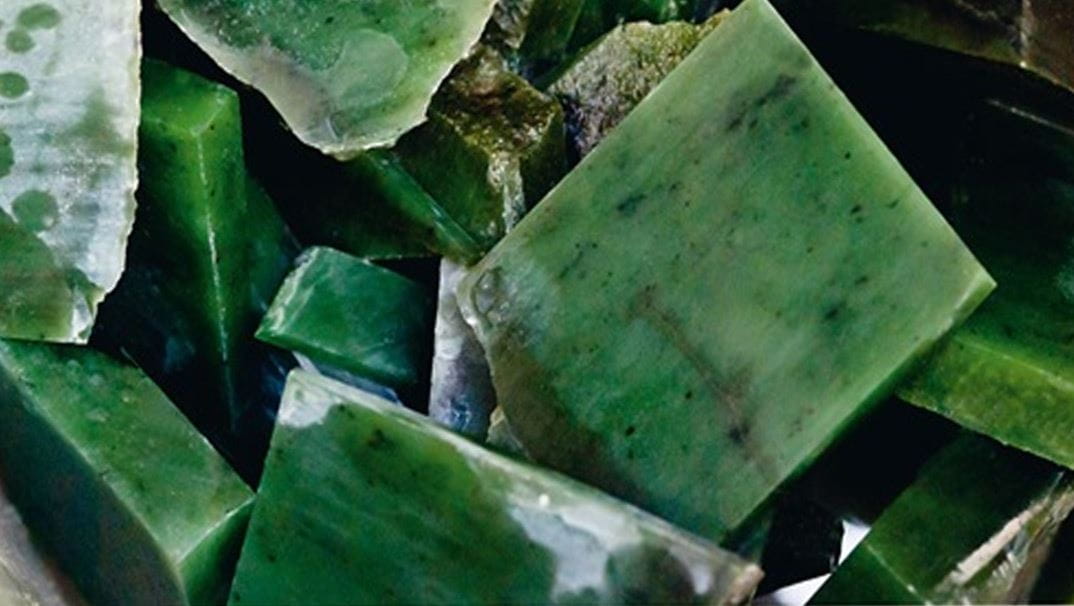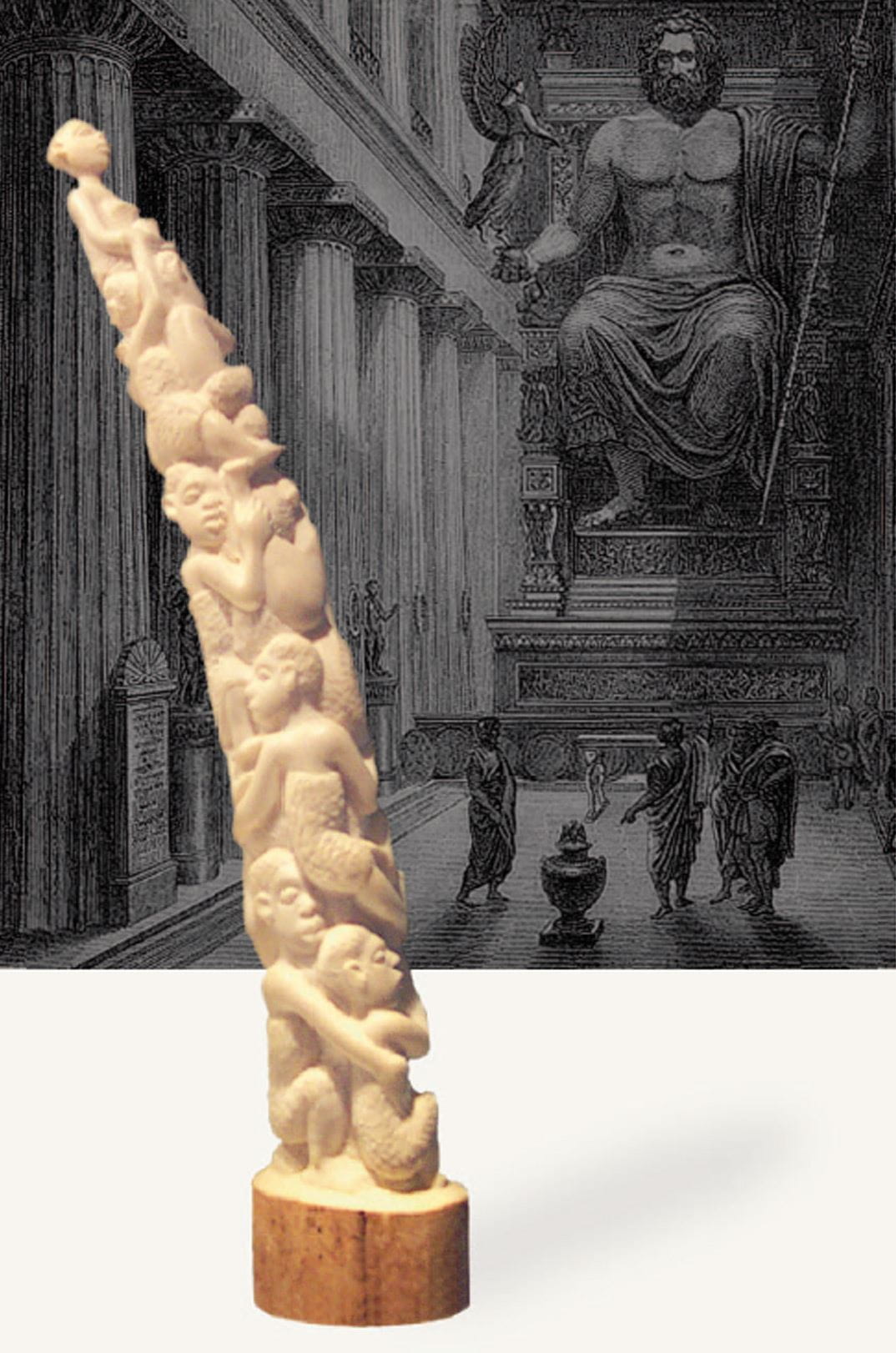
The Origins of Culture
The first known man-made works of art date from roughly 34000 years ago, made of a material that still retains an aura of mystery: mammoth ivory.
Carved with astonishing skill, the figures represent predatory beasts, horses, and of course the animal that provided mankind with this precious material for jewellery, utensils, and sculptures.
With its massive curled tusks, up to 4 metres long and weighing as much as 150 kg, the mammoth must have made a great impression on our forebears. Preserved for posterity in cave paintings and carved figures, it became a symbol for an entire epoch in the history of human development.
The mysterious white material remained in demand after the end of the last ice age. King Solomon, famed not just for his wisdom but also for his fabulous wealth, “made a great throne of ivory, and overlaid it with pure gold".
The works by the sculptor Phidias acquired immortal fame in ancient Greece and Rome. These were huge wooden statues of deities, faced with gold and plates of ivory. And in later times the art of ivory-working went from one climax to the next.

Fascinating Finds
Exclusive materials of the highest quality are chosen for the “Pen of the Year”: materials that are a challenge to obtain.
For the best mammoth ivory one must undergo adventurous expeditions to the coast of the Arctic Ocean in Siberia.
Frozen in pure ice, the ivory there has retained its immaculate beauty. It comes to light only during the brief Siberian summer, for example when a piece breaks from an iceberg. For export, the ivory requires a licence that cannot be granted until a scientific assessment has been carried out.
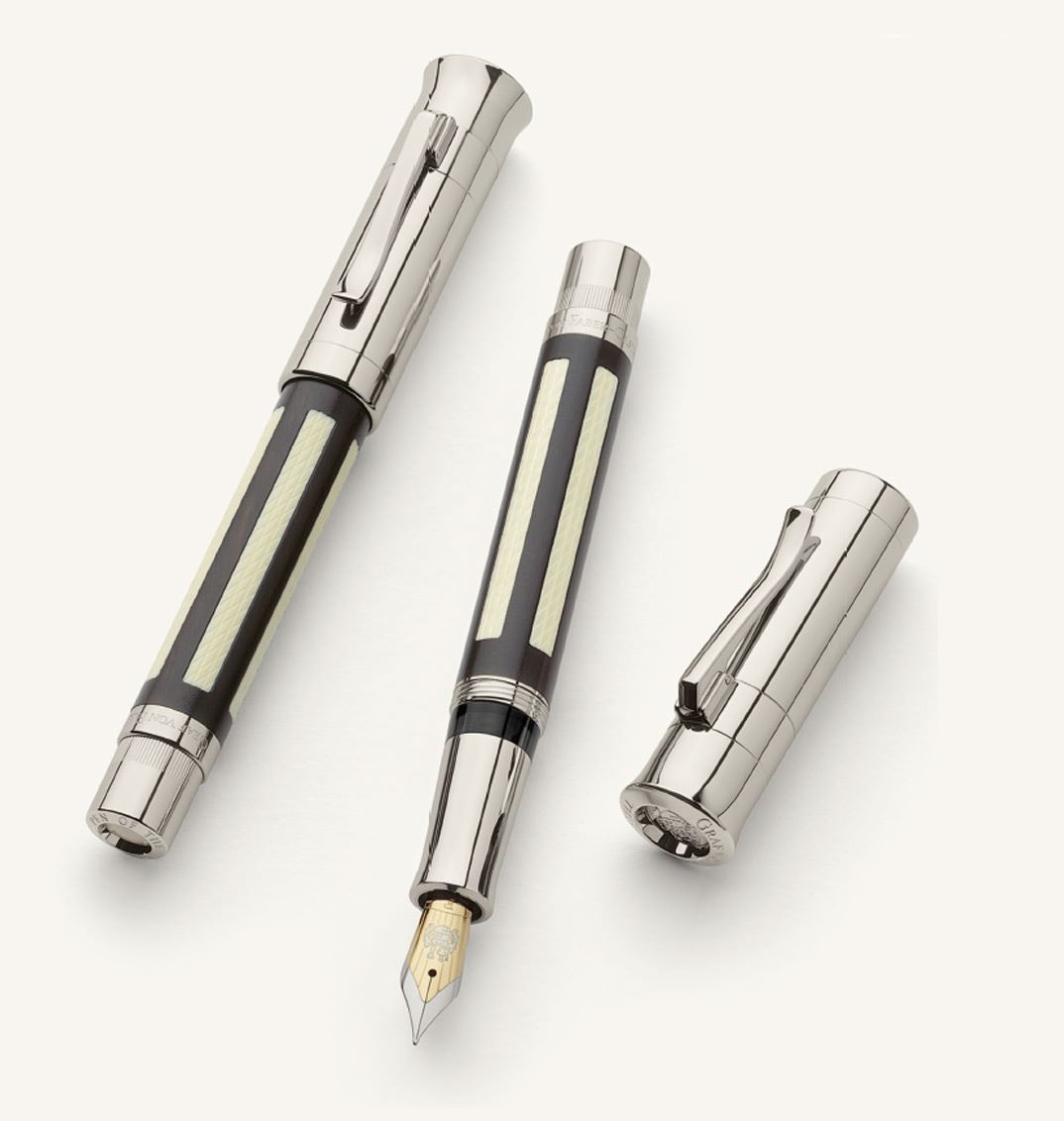
Perfection in Black and White
Just as certain people have a natural affinity to certain others, some materials just “go together".
Ivory is frequently combined with ebony, known even in antiquity as one of the most beautiful and most expensive of woods. The heartwood, very dark brown to black, shows off the creamy white of the ivory almost perfectly.
This composition takes ideal shape in the “Pen of the Year 2006”. In elaborate inlay work, the artistically engraved pieces of ivory are let into an ebony framework.
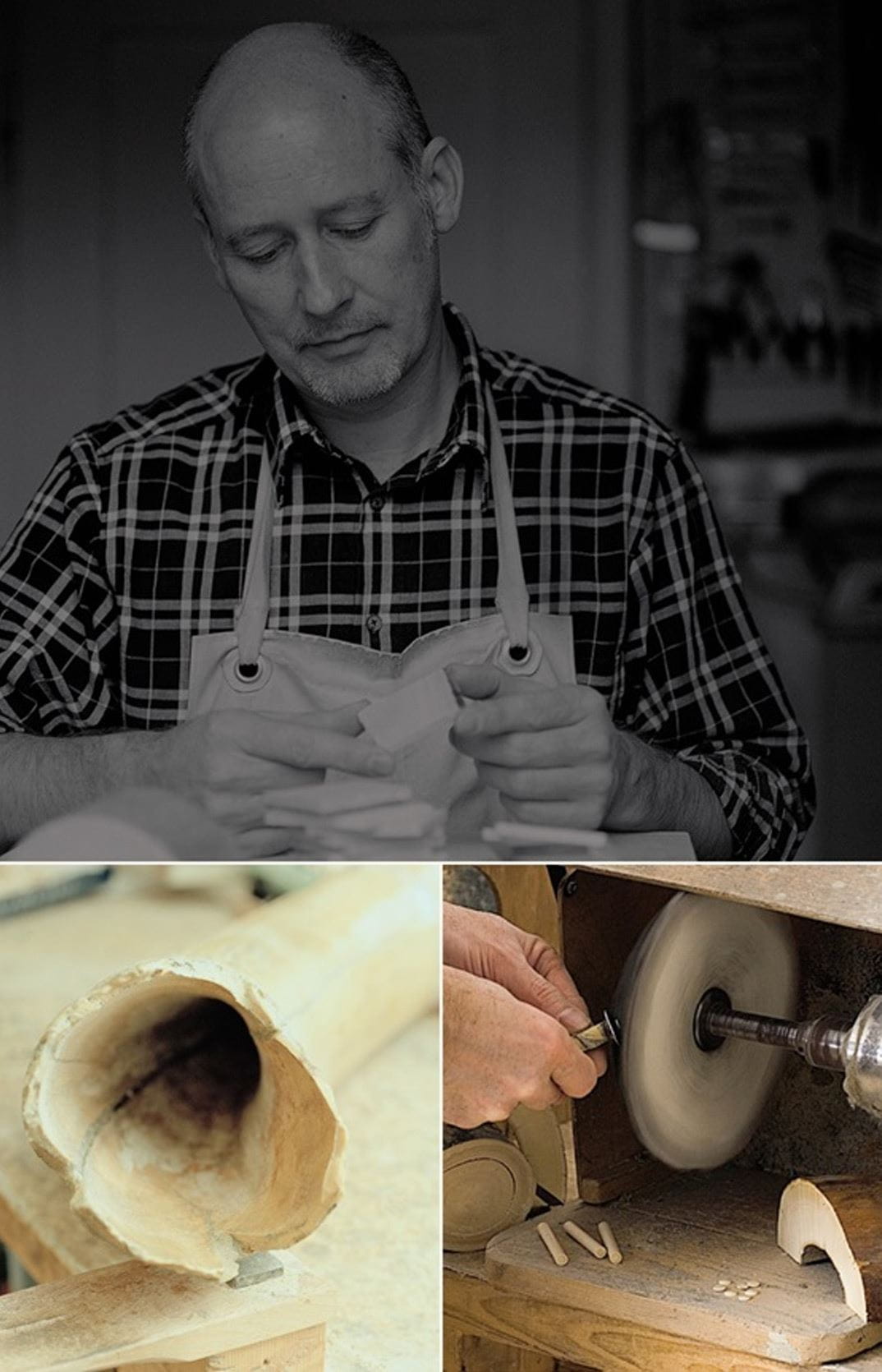
The Art of the Ivory Carver
Mammoth ivory is no ordinary ivory. It is 20 to 25 per cent heavier, and a connoisseur will immediately recognize it from the unique veining.
The material has absorbed moisture during the millennia it was buried in the ice, and needs to be slowly and carefully dried out over a period of three to five years. Only then can one cautiously cut, grind, turn, and polish it. This takes special skills, and hardly anyone is better suited to the task than Jürgen Schott.
As grand master of the guild of ivory carvers in the Odenwald region near Heidelberg, he is familiar with the rich tradition that has produced many outstanding works of art over the past 200 years.
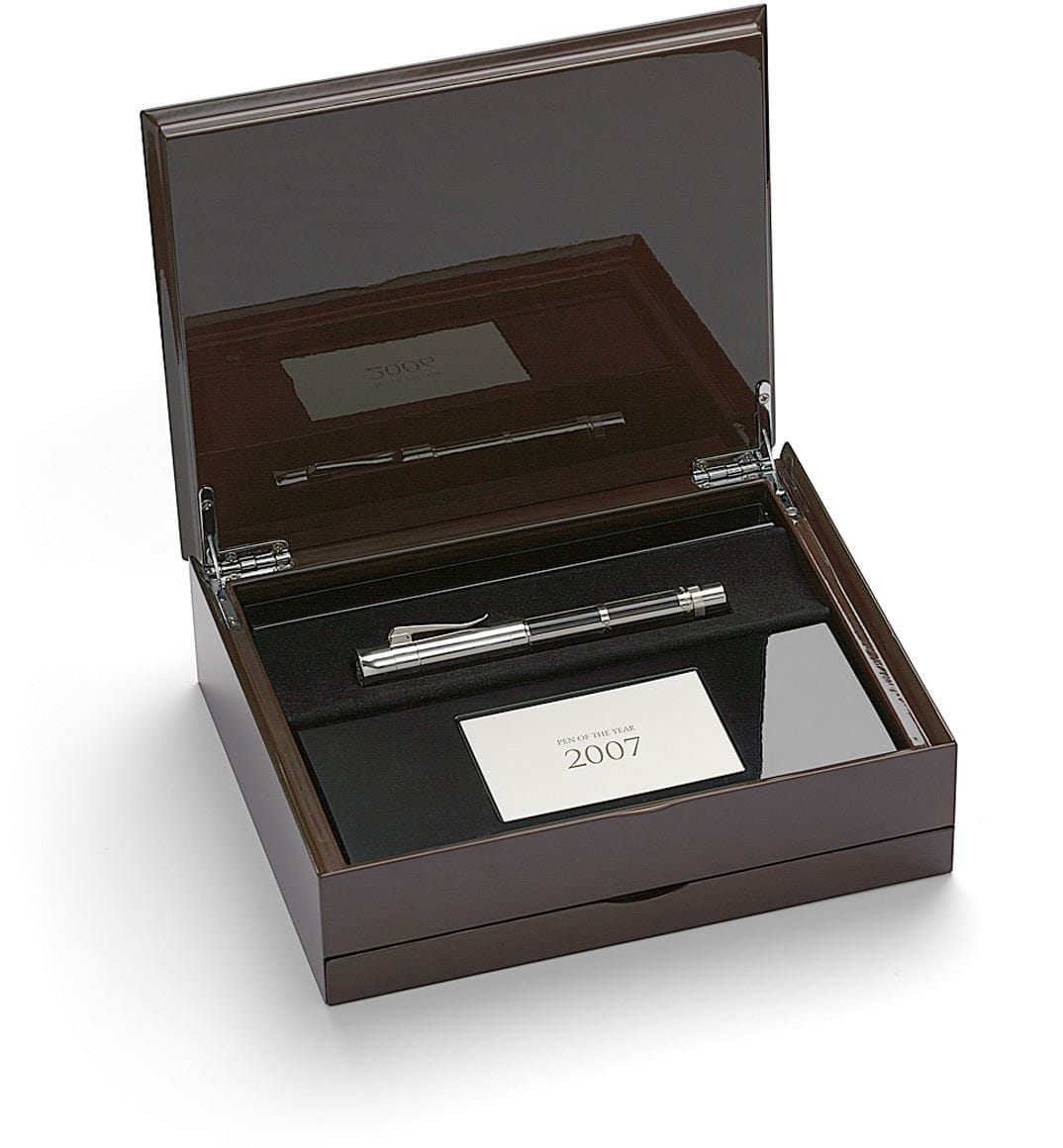
High Quality Presentation
This bears the personal signature of the master craftsman Jürgen Schott and attests the quality of the ivory.
Unmistakeable Quality
The elaborate craftsmanship and the individual nature of natural materials make each and every “Pen of the Year 2006” a unique work of art. The 18-carat bicolour gold nib is ‘run in’ by hand and is available in the line widths F, M, and B. The spring-loaded solid metal clip ensures that the pen sits firmly in the pocket. The platinized end cap protects the knob of the plunger mechanism. The polished ivory disc in the end cap reveals the typical texture of mammoth ivory from the outside. Inside is a stylized mammoth engraved with the master craftsman’s initials.
Limited to: 2.000 fountain pens
